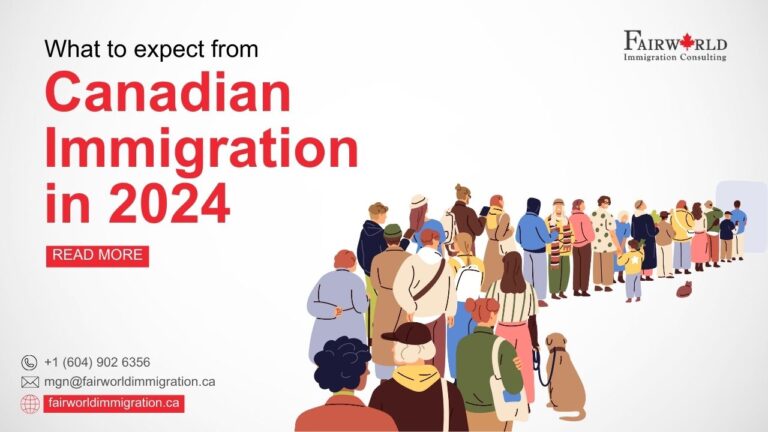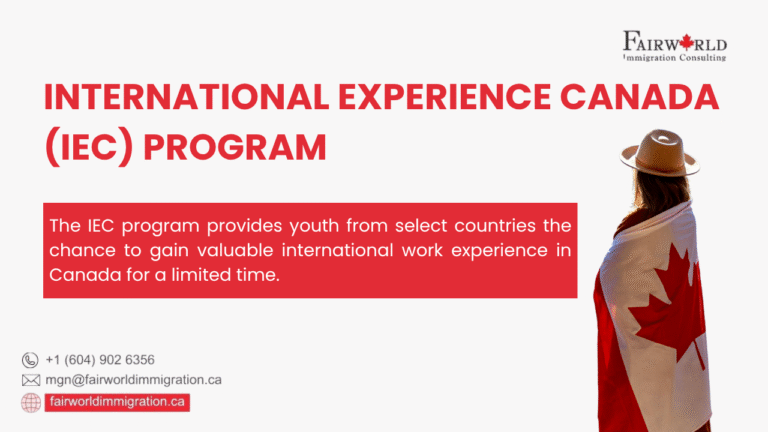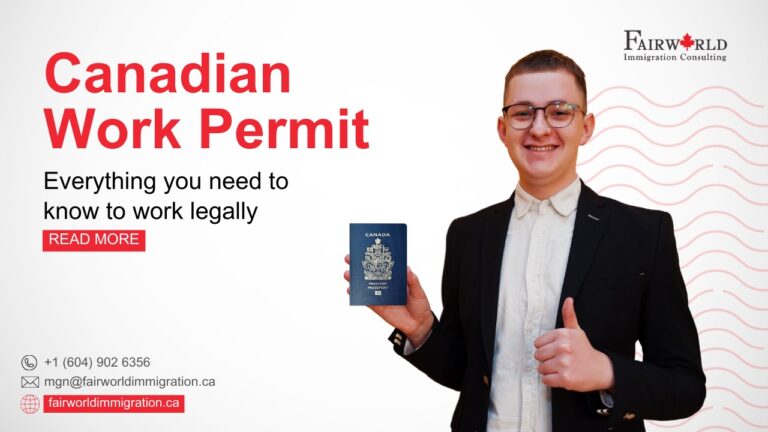Canadian Work Permit – Step-by-Step Guide
Published on June 19th 2025 by Fairworld Immigration
Applying for a Canadian work permit offers numerous benefits for foreign nationals seeking employment opportunities in Canada. A valid work permit allows you to legally work for a Canadian employer, gain international job experience, and potentially earn a competitive salary. It can also serve as a pathway to permanent residency through programs like the Canadian Experience Class or Provincial Nominee Program. In many cases, your spouse may be eligible for an open work permit, and your children can attend school in Canada. Working in Canada also provides access to valuable professional networks and exposure to a diverse, inclusive, and stable work environment.
Canadian Work Permit Overview
In Canadian immigration, “work” is broadly defined as any activity for which wages or commissions are earned, or that competes with jobs performed by Canadian citizens or permanent residents—regardless of duration.
Typically, obtaining a Labour Market Impact Assessment (LMIA) is required to show that hiring a foreign worker will not negatively impact the Canadian job market. In most cases, a job offer from a Canadian employer is necessary to apply for a work permit.
Some exceptions exist—Open Work Permits are not employer-specific and are available in limited scenarios. While all work permits are temporary, they can often be renewed from within Canada.

Step-by-Step Guide to Canadian Work Permit
Below is a step-by-step guide to applying for a temporary Canadian work permit:
Step 1: Employer Applies for a Labour Market Impact Assessment (LMIA), if Required
Work permits fall into two categories:
- LMIA-required permits
- LMIA-exempt permits
An LMIA is a document issued by Employment and Social Development Canada (ESDC). It confirms whether hiring a foreign worker will have a positive, neutral, or negative effect on the Canadian labour market. A positive or neutral LMIA means no qualified Canadians are available for the job. A negative LMIA means local workers are available, and hiring a foreign national could harm the job market.
Employers in Quebec must also apply for a Certificat d’acceptation du Québec (CAQ) through MIFI when hiring a foreign worker. In some cases, Quebec offers a streamlined LMIA process for certain jobs that doesn’t require proof of recruitment.
When Is an LMIA Not Required?
- Certain work permits are LMIA-exempt, including:
- Under international agreements (e.g., CUSMA, CPTPP, International Experience Class etc.)
- Jobs offering significant economic, cultural, or social benefits to Canada
- Reciprocal employment programs, like youth or teacher exchanges
- Co-op placements for international students
- Spouses or partners of certain temporary workers or students
- Charitable or religious work
- Refugee claimants needing to support themselves
- Certain permanent residence applicants
- Workers facing abuse under employer-specific permits
Step 2: Employer Issues a Job Offer
After receiving a positive or neutral LMIA, the employer must provide the foreign worker with:
- The LMIA approval letter
- A detailed job offer letter
These documents are required for the work permit application.
Step 3: Worker Applies for a Work Permit
Using the LMIA approval, job offer (and CAQ, if applicable), the foreign worker submits a work permit application to Immigration, Refugees and Citizenship Canada (IRCC). Depending on the worker’s nationality, they may also need a Temporary Resident Visa (TRV) to enter Canada.
Step 4: Work Permit Issuance
The temporary work permit is typically issued upon arrival in Canada by a Canada Border Services Agency (CBSA) officer at the port of entry.
Work permits are usually employer-specific (also known as closed permits) and only allow the worker to work for the named employer in the approved job. If the worker changes jobs or employers, a new work permit must be obtained unless they hold an open permit.
Important Note:
A temporary work permit is intended for individuals planning to work in Canada for a limited period. Those wishing to stay permanently must apply for permanent residence. However, a temporary work permit can be a stepping stone toward permanent residency through programs such as:
- Canadian Experience Class (CEC)
- Skilled Worker streams
- Provincial Nominee Programs (PNPs)
For more information on how you can apply for a Work Permit, you may contact Fairworld Immigration Consulting at +1 604 902 6356 or mgn@fairworldimmigration.ca






